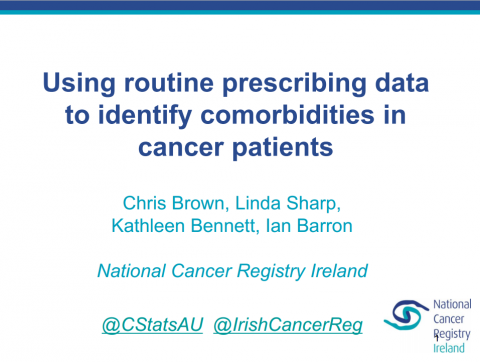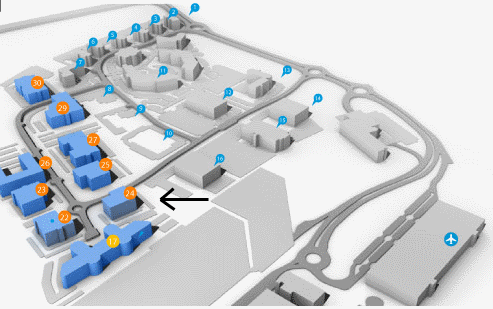Current Size: 100%
Using routine prescribing data to identify comorbidities in ovarian cancer patients
Background: Although certain comorbid conditions may predict treatment receipt and survival in cancer patients, most cancer registries do not routinely collect data on comorbidities. Registries increasingly have access to community prescribing data. A number of algorithms exist for estimation of comorbidities based on prescription history, including RxRisk1 (the updated Chronic Disease Score) and the number of distinct prescription classes2 (DMC). We evaluated the utility of using prescribing data to identify comorbidities in ovarian cancer patients in Ireland.
Method: Free healthcare within the Irish public healthcare system is restricted to holders of general medical services (GMS) cards, eligibility for which is based on means-test and age. Prescription records were linked, using probabilistic matching methods, to primary ovarian cancers (ICD10 C56) diagnosed 2001-2010. Degree of comorbidities was estimated, using RxRisk and DMC, based on prescriptions in the year prior to cancer diagnosis. The scores were evaluated for prognostic value on treatment (within 12m) and overall survival using logistic and Cox regression respectively.
Results: 1,542 (50%) of the 3,097 incident ovarian cancers had GMS prescriptions in the year prior to diagnosis. Among these women, RxRisk comorbidities with highest prevalence were: gastric acid (39%),hypertension (36%), antiplatelet related (31%) and hyperlipidaemia (31%). Other common categories (>20%) were: pain, inflammatory pain, and ischaemic heart disease. The median simultaneous comorbidity categories was 3 (range 0-12). The median number of DMCs was 11 (range 1-48). Neither the number of conditions nor RxRisk index were associated with chemotherapy receipt or cancer-directed surgery. RxRisk predicted survival (HR=1.03, 95%CI 1.01,1.05) as did DMC (HR=1.01, 95%CI 1.00,1.02). Among common comorbidities, depression, hyperlipidaemia and reactive airway diseases could adversely affect survival.
Conclusion: Comorbidities can be estimated from linked prescribing data and have some prognostic value in predicting survival after ovarian cancer diagnosis.
Acknowledgements: Health Research Board (HRA_HSR/2012/30)
References:
1. Fishman, et al. Risk adjustment using automated ambulatory pharmacy data: the RxRisk model. Med Care. 2003 Jan;41(1):84–99.
2. Schneeweiss et al. Performance of comorbidity scores to control for confounding in epidemiologic studies using claims data. Am J Epidemiol. 2001 Nov 1;154(9):854–64.






